
Countries could save $3trn in electricity decarbonisation costs for net zero by investing an additional $1.7trn in upgrading global transmission grids by 2040, according to modelling from the Future Energy Outlook (FEO), a new energy transition planning tool set to be launched by climate analytics non-profit TransitionZero at COP28.
“The importance of grid infrastructure [in the energy transition] is now well understood, but the amount of capacity investment needed on a country-by-country basis has been unknown until now,” said Matthew Gray, CEO & co-founder of TransitionZero, at a press conference for the findings on 23 November.
The Cables to Change the World report – built on FEO data modelling, with support from Dartmouth College, Simon Fraser University and the Climate Compatible Growth programme – analyses a key impediment to the global energy transition to net zero: the need to modernise grids to increase access to, and optimise use of, renewable power. The report quantifies, for the first time, the additional revenues that countries such as India and Algeria could reap from exporting their vast surplus renewable energy resources to other countries and regions via better interconnections.
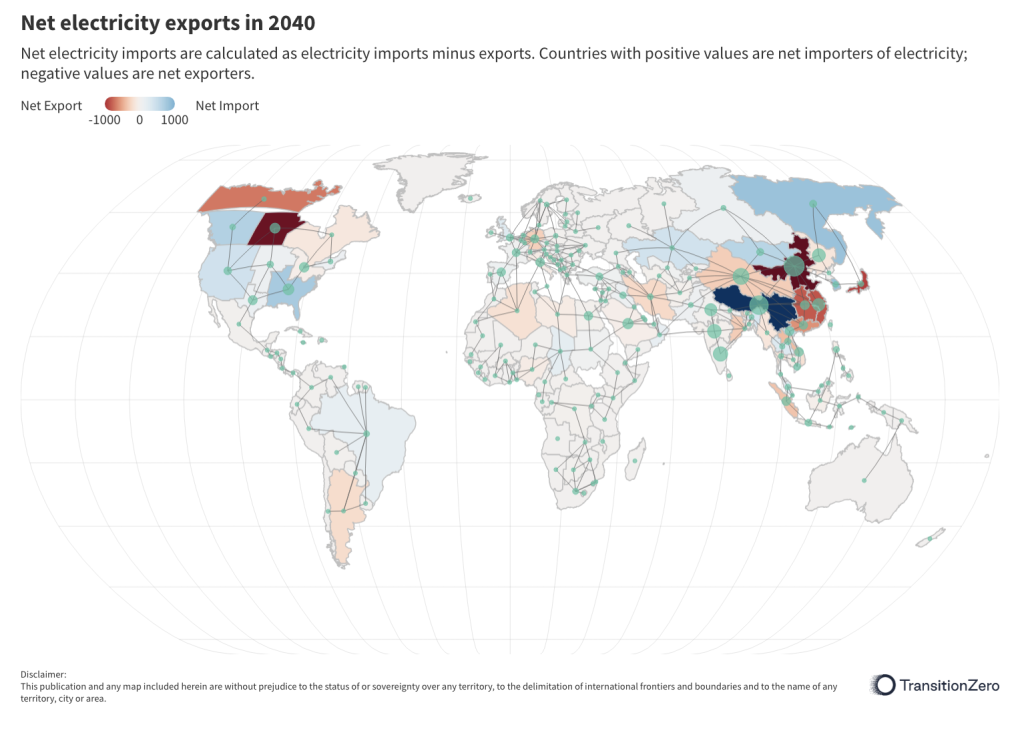
The International Energy Agency estimates that there are currently 1.5TW of clean power projects waiting to be connected to the world’s overloaded grids – five-times the entire amount connected in 2022. Upgrading the existing transmission infrastructure could significantly reduce or even prevent these waiting times, it says.
“Together with supply infrastructure, there is a need to set long-term national targets for transmission,” Abishek Shivakumar, head of energy systems modelling at TransitionZero and a lead author of its latest report, told journalists. “We need to build transmission and clean electricity supply in lockstep. We can’t have a situation where one is built and then we are waiting for the other.”
China has been the source of a third of the world’s transmission infrastructure expansion over the past decade, but the country needs an extra 500GW of transmission grid and cross-border interconnector capacity by 2040 to save $557bn (3.96trn yuan) on its net-zero power transition. If it makes the investment, “by 2040, China will become the largest exporter of clean power globally”, said Shivakumar.

US Tariffs are shifting - will you react or anticipate?
Don’t let policy changes catch you off guard. Stay proactive with real-time data and expert analysis.
By GlobalData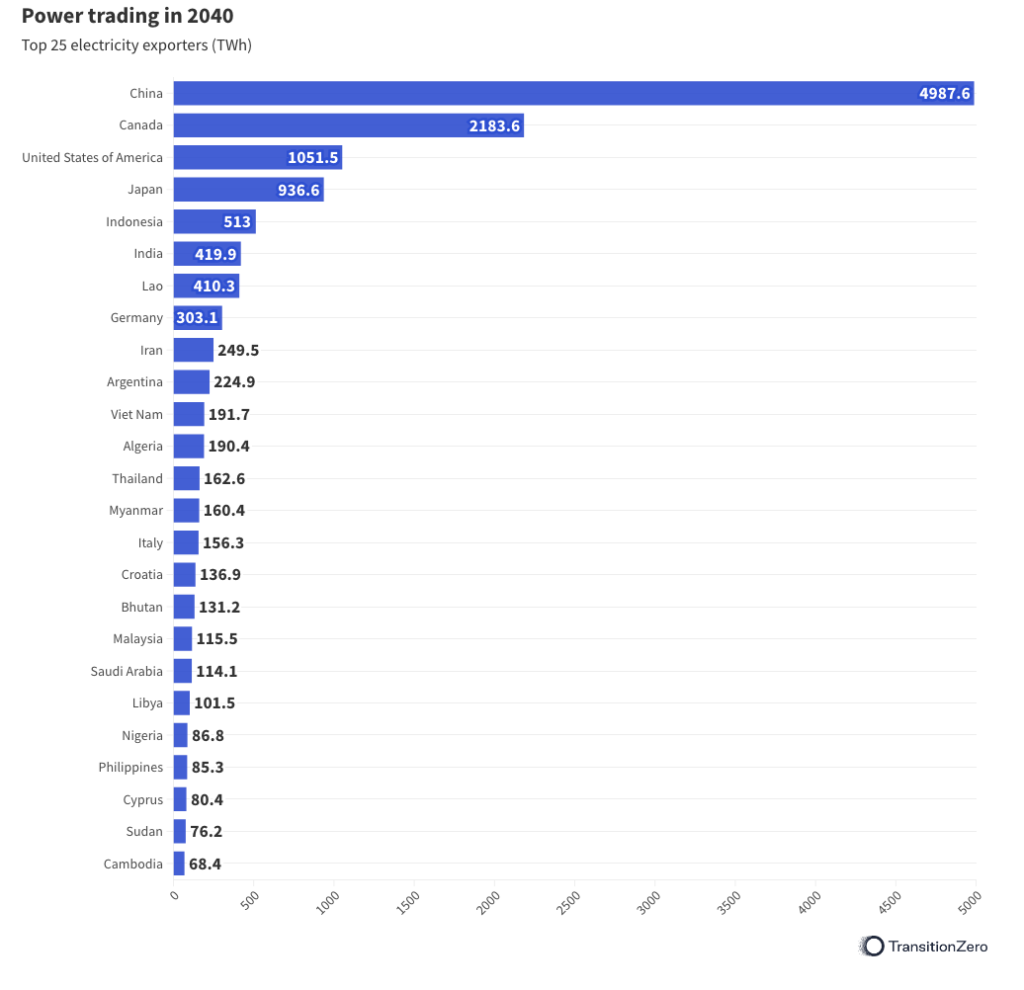
The US effectively needs to double its grid by 2040, adding 289GW of transmission and interconnector capacity, which would result in savings of a whopping $1.9trn. “North America, including the US and Canada, has the largest build out of interconnectors and transmission, as well as the largest cost savings of any region globally,” said Shivakumar.
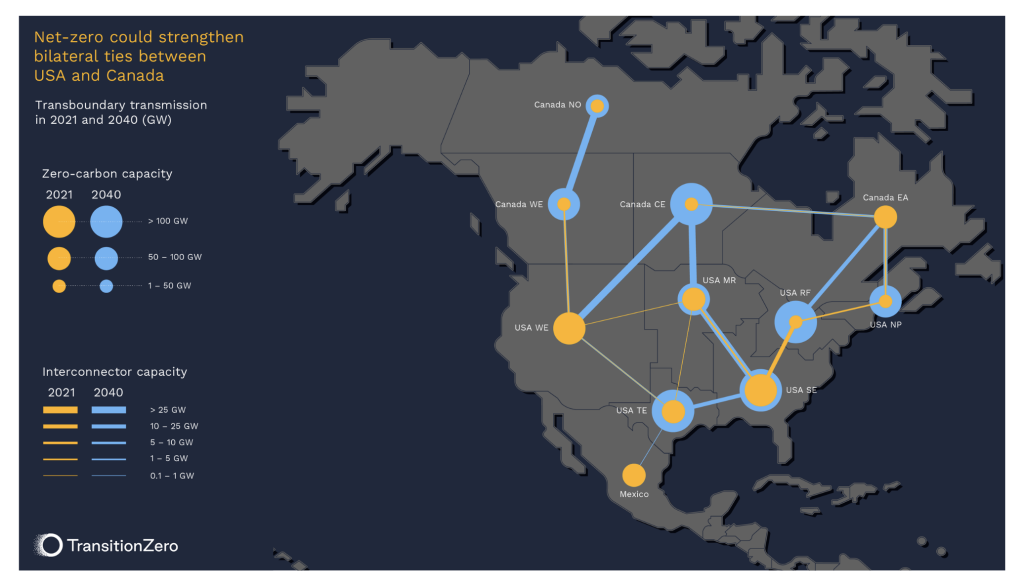
South East Asia requires around $191bn in net-zero upgrades to its grid infrastructure, which would save the region $99bn and make it a net exporter of renewable power. “South East Asia has uniquely complementary power systems,” said Shivakumar. “From hydro[power] in Laos and Vietnam, to solar in Thailand, and offshore wind in the Philippines and Vietnam, all these complementary renewable resources strengthen the case for an interconnected regional grid.”
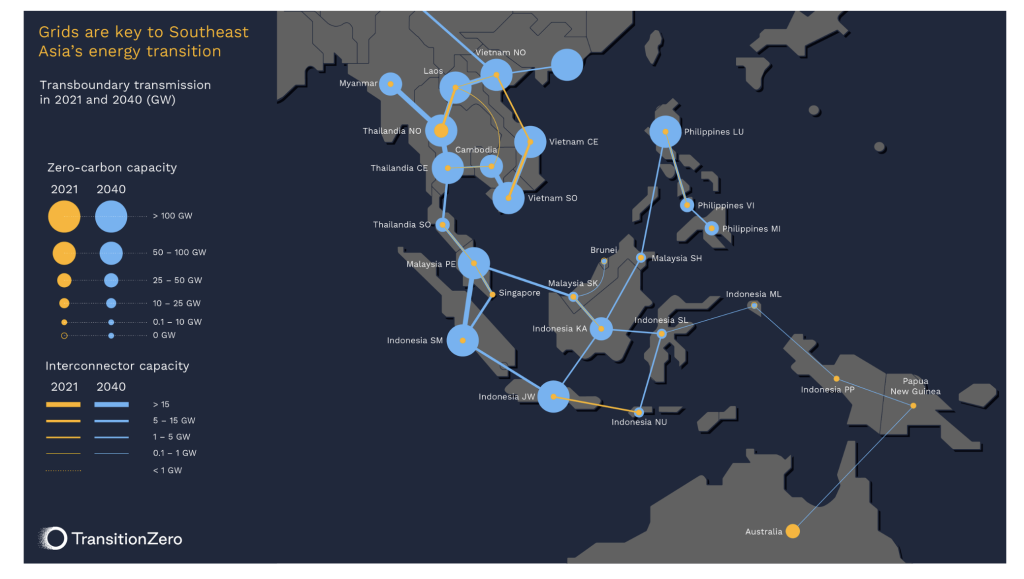
Europe currently boasts the world’s most interconnected grid, but the region requires an additional investment of $71bn to add 74GW of transmission and interconnector capacity to reach its optimal net-zero power system. This investment would, in turn, result in savings of $350bn. “In Europe, the main trend we find is strong links to North Africa, which would allow European countries to import North African renewable electricity,” added Shivakumar.
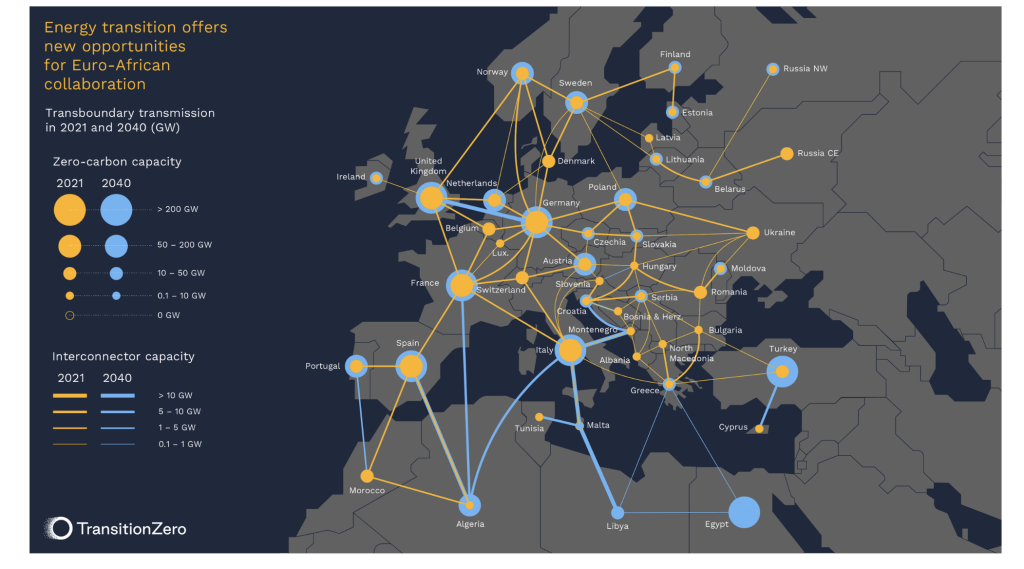
At COP28 starting this week, around 60 countries, including the US and the EU, will back a target to triple global renewable energy capacity to 11TW by 2030. Sufficient grid infrastructure is critical to enable the efficient deployment of renewables, with transmission allowing for the best placement of wind and solar resources and reducing the amount of generation and storage required.
Grid infrastructure also creates opportunities for new global trade, promoting multilaterialism at a time of growing protectionism, suggests TransitionZero. Expanding transmission systems could open new trading relationships, particularly east-to-west, notes the report.
“The top line number of $3trn of benefits should really help politicians and policymakers take notice of the potential of interconnectors,” said Marcus Stewart, head of the Green Grids Initiative, an organisation launched at COP26 that aims to connect up different regional grids for a global transfer of renewable power. “A real benefit of interconnection is that you can balance demand and supply across regions in a mutually beneficial relationship. From a political point of view, that is something that is missing out there at the moment – good grids and interconnectors have the opportunity to make us good neighbours.”
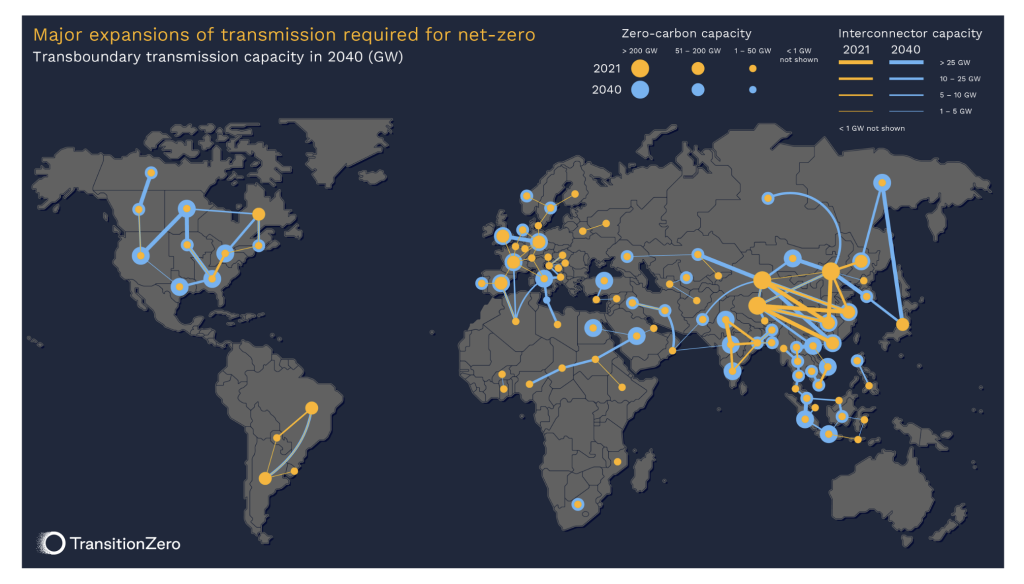
“Grid modernisation is the blind spot of the net-zero transition,” said Gray. “Too often legacy ‘black-boxed’ data has detached energy models from what is happening on the ground, preventing the grid build-out from keeping pace with the influx of renewables. Our main enemy is time – there is no time for missteps. For climate targets to be met, the effective build-out of transmission infrastructure, underpinned by open data, is critical. Moreover, governments need to grasp that a decision not to invest in the grid is a decision to build more expensive capacity such as nuclear and biomass.”
The FEO is an energy system modelling platform that predicts future growth of the electricity generation capacity of 163 countries, representing 99% of the global population. It uses satellite and on-the-ground data of power plants and grid infrastructure. It is built on the OSeMOSYS Global framework, an open-source, open-data model generator for creating global electricity system models.



